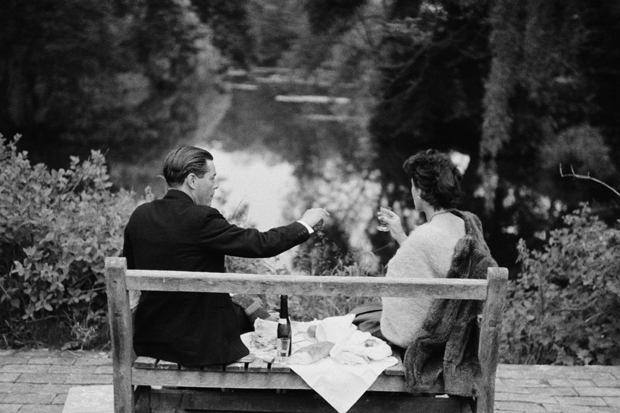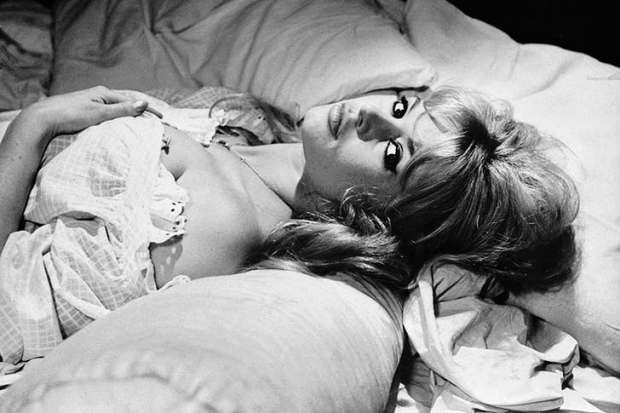This is hardly the time of year for picnics on the lawn, but I have nevertheless had a week dominated by Glyndebourne. First I went to London to see David Hare’s play The Moderate Soprano, about the creation of the Glyndebourne opera festival by John Christie in 1934; and then to a Glyndebourne production in Milton Keynes of Mozart’s opera Die Entführung aus dem Serail.
John Christie was an extraordinary man. A rich country landowner, who served bravely in the first world war, he returned home to his house in Sussex to pursue his interest in music. He purchased a colossal organ, perhaps the biggest in England outside a cathedral. He put on little opera performances in the organ room. And then, at the age of 48, having reputedly been celibate until then, he married a Canadian opera singer called Audrey Mildmay, the ‘moderate soprano’ of the play’s title.
With her, and for her, he built a small, 300-seat theatre as an annexe to the organ room and opened an opera festival with The Marriage of Figaro. It was an instant success, achieving a standard of performance superior to anything else in England at the time; and this was largely due to the fact that he put in charge two distinguished émigrés from Nazi Germany, the conductor Fritz Busch and the opera director Carl Ebert.
To them he added as general manager the Austrian émigré Rudolf Bing, who after the second world war helped Christie launch the Edinburgh Festival by bringing Glyndebourne opera to the city. Bing became a British citizen and was knighted for his service, but soon moved on — to Christie’s dismay — to run the Metropolitan Opera House in New York. Hare in his play makes much of the fact that Glyndebourne, so widely regarded as a quintessentially English institution, was in fact the creation of Germanic immigrants.
But, of course, it could never have existed without John Christie, who had the idea and the money and energy to make it happen. His portrayal in Hare’s play (brilliant though Roger Allam’s performance is) has caused some controversy, because some who knew him think it doesn’t sufficiently reflect his wit and charm. I wouldn’t know about that, though I did once meet him. Christie was for several years a science master at Eton, and such was his affection for the school that every year he would invite a group of Eton schoolboys to attend an opera with him in his box. In 1957 I was one of this group, and I remember him as a very amiable and hospitable old boy in a dinner jacket.
Evening dress was something that Christie insisted upon, because he thought it incumbent upon audiences to dress formally out of respect for the artists who had worked so hard. If the artists had made such an effort, the audience should make one too. Hare makes much of this, and also of the fact that Christie’s original idea was to put on Wagner, not Mozart, in his little theatre. He was a great Wagner fan, a regular visitor to Bayreuth, and he initially proposed that the festival should open with Parsifal, suggesting that it could be done with nothing more than a string quartet and his great organ booming away through an open door from the room adjoining the theatre. Busch and Ebert told him that this was ridiculous and persuaded him to go for Mozart instead.
And so it turned out that Glyndebourne built its reputation on its performances of Mozart, and it was many years after Christie’s death in 1962 that it finally put on a Wagner opera, Tristan und Isolde. I think it may well have been Die Entführung that I saw there on my first visit in 1957. I’m not quite sure whether it was then or later; it might have been Rossini’s Le comte Ory. For I saw both these operas at Glyndebourne in those (for me) early years, and both have remained favourites with me ever since. And to see Die Entführung again after all these years, and in the splendid theatre of Milton Keynes, a glory of this much derided city, was an enormous pleasure. It was a wonderful production, confirming that the standards aspired to by John Christie in the 1930s have been maintained if not surpassed.
The performance I saw took place the day after the hideous Isis massacre in Paris. The plot of the opera concerns the efforts of a Spanish nobleman to rescue his beloved from a harem in Turkey where she has been made captive by a Muslim pasha who is in love with her. Their attempted escape is thwarted, and the Spaniard turns out to be the son of the pasha’s most hated enemy. Nevertheless, forswearing any thoughts of revenge, the pasha recognises their love for each other and nobly lets them go free. An admirable Muslim indeed.
Got something to add? Join the discussion and comment below.
Get 10 issues for just $10
Subscribe to The Spectator Australia today for the next 10 magazine issues, plus full online access, for just $10.
You might disagree with half of it, but you’ll enjoy reading all of it. Try your first month for free, then just $2 a week for the remainder of your first year.













Comments
Don't miss out
Join the conversation with other Spectator Australia readers. Subscribe to leave a comment.
SUBSCRIBEAlready a subscriber? Log in